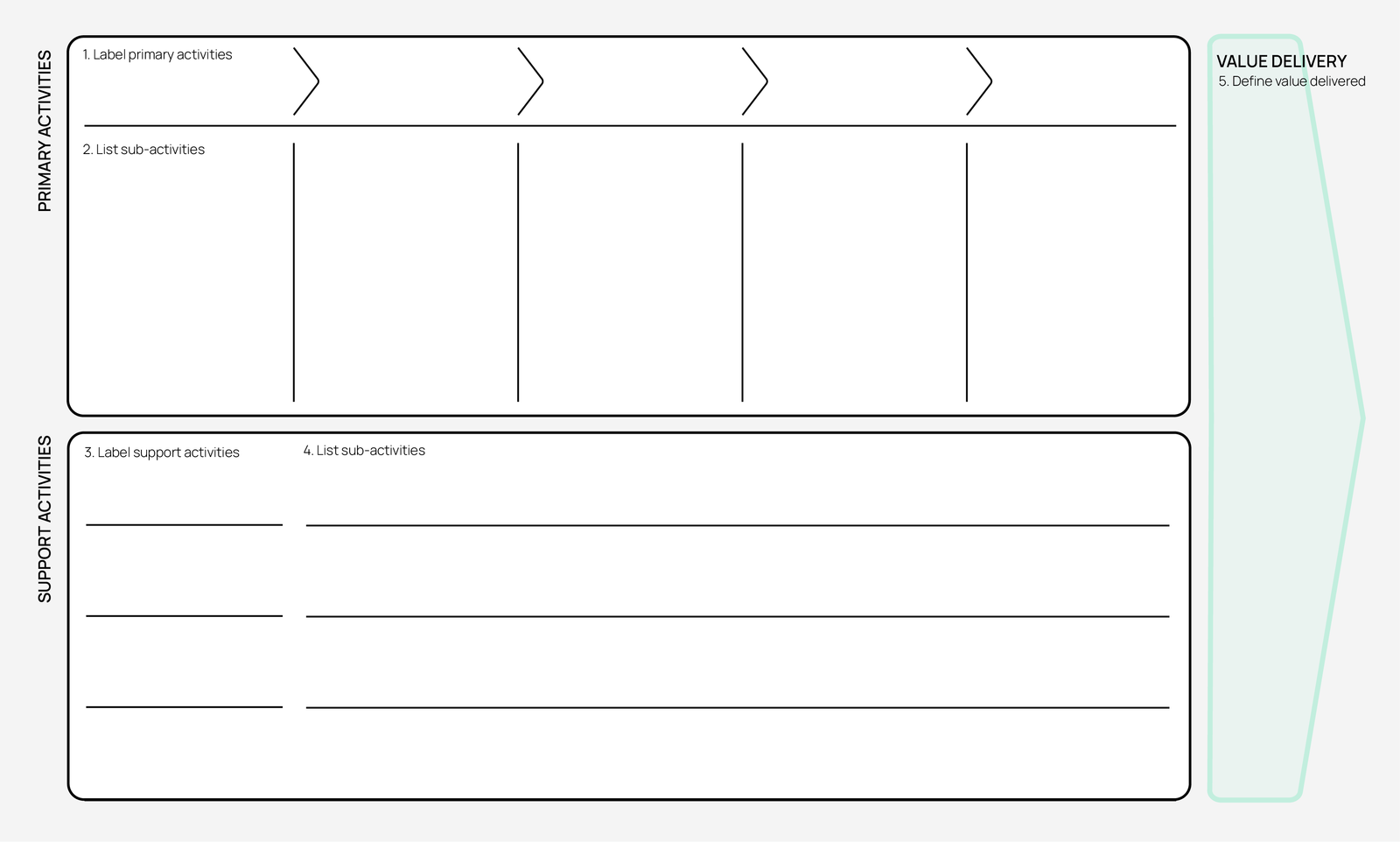Porters Value Chain Analysis
Porter’s Value Chain Analysis is a tool which helps organisations define and optimise their activities to create more value.
It breaks down a company’s activities into primary and support activities, each contributing to the overall value and competitive advantage of the organisation.
The primary and support activities are typically organised as follows, but can be customised to the organisation:
Primary activities: Fundamental activities that directly contribute to the creation of an offering, adding value to it in the process. Example primary activities:
Inbound Logistics: Receiving and storing raw materials
Production: Transforming inputs into finished products
Outbound Logistics: Distributing finished products to customers
Marketing and Sales: Promoting and selling products
Service: Providing post-sale support to customers
Support activities: Functions that assist the primary activities in helping the organisation to operate effectively. Example secondary activities:
Human Resource Management: Recruiting, training, and retaining employees
Technology: Supporting systems such as software and hardware
Infrastructure (Governance): Management, legal and finance
Procurement: Contract management, negotiations and partnerships
The results
- A clear map of organisational activities from start to finish
- Insight on where the organisation creates value and where effort may be wasted
- Ideas for boosting efficiency

When to use it
Boosting Efficiency: When looking to trim the fat and make an organisation run more efficiently
Competitive Edge: When figuring out what makes your business stand out from the competition
Building alignment: When assessing and communicating how different functions, business units and activities fit together
Strengths
Structured
Versatile
Widely recognised
Visual
Weaknesses
Inwards facing
May not be suitable for smaller organisations
Can be time consuming to develop
How to use it?
What do I need to start?
A good understanding of the organisation and inputs such as:
- A list of the organisation’s activities
- Information about primary activities and support activities
How to use it?
Who to involve?
Porter’s Value Chain Analysis can be done alone or with a team. Consider involving:
- People who have good understanding of primary and support activities
- People with the skills to identify opportunities for improvement
- Representatives who will challenge insights and assumptions
- Advisors who can offer advice based on what works well in the industry
Step by step
1
Define primary activities
List primary activities sequentially along the value chain. Ask questions like:
- How do we produce our offering?
- How do we sell it?
- How does it reach our customers?
2
Define support activities
List support activities which span across the value chain. Ask questions like:
- What services support primary activities?
- What technologies do primary activities rely on?
- How are primary activities managed, monitored and controlled?
3
Find opportunities for improvement
Consider what areas across the value chain could be improved. Ask questions like:
- What strengths and weaknesses exist across the value chain?
- What activities create duplication or bottlenecks?
- What activities can be further strengthened to add more value?
- What are the relationships and patterns between activities, and how do they impact the value?
4
Brainstorm actions
Consider what actions could be taken to address the opportunities. Ask questions like:
- How can we build on strengths?
- How can we address weaknesses?
- How can we beat the competition?
- How can we improve our margins (reduce cost or increase value)?
5
Prioritise actions
Identify the most important actions. Ask questions like:
- Which activities have the most significant impact on customer’s perception of value?
- Where can we achieve the most considerable cost savings?
6
Assign responsibilities for actions
Consider developing a 1-Page Business Case or a Project Initiation Document (PID) for actions that require significant resources.